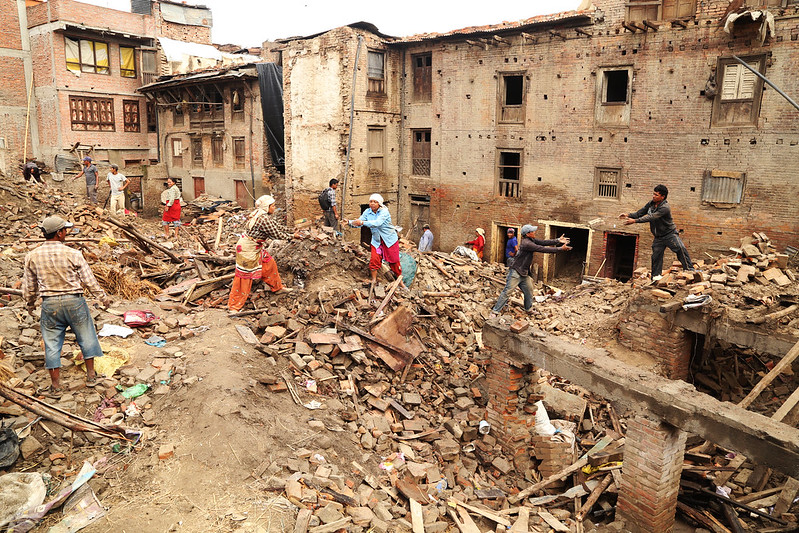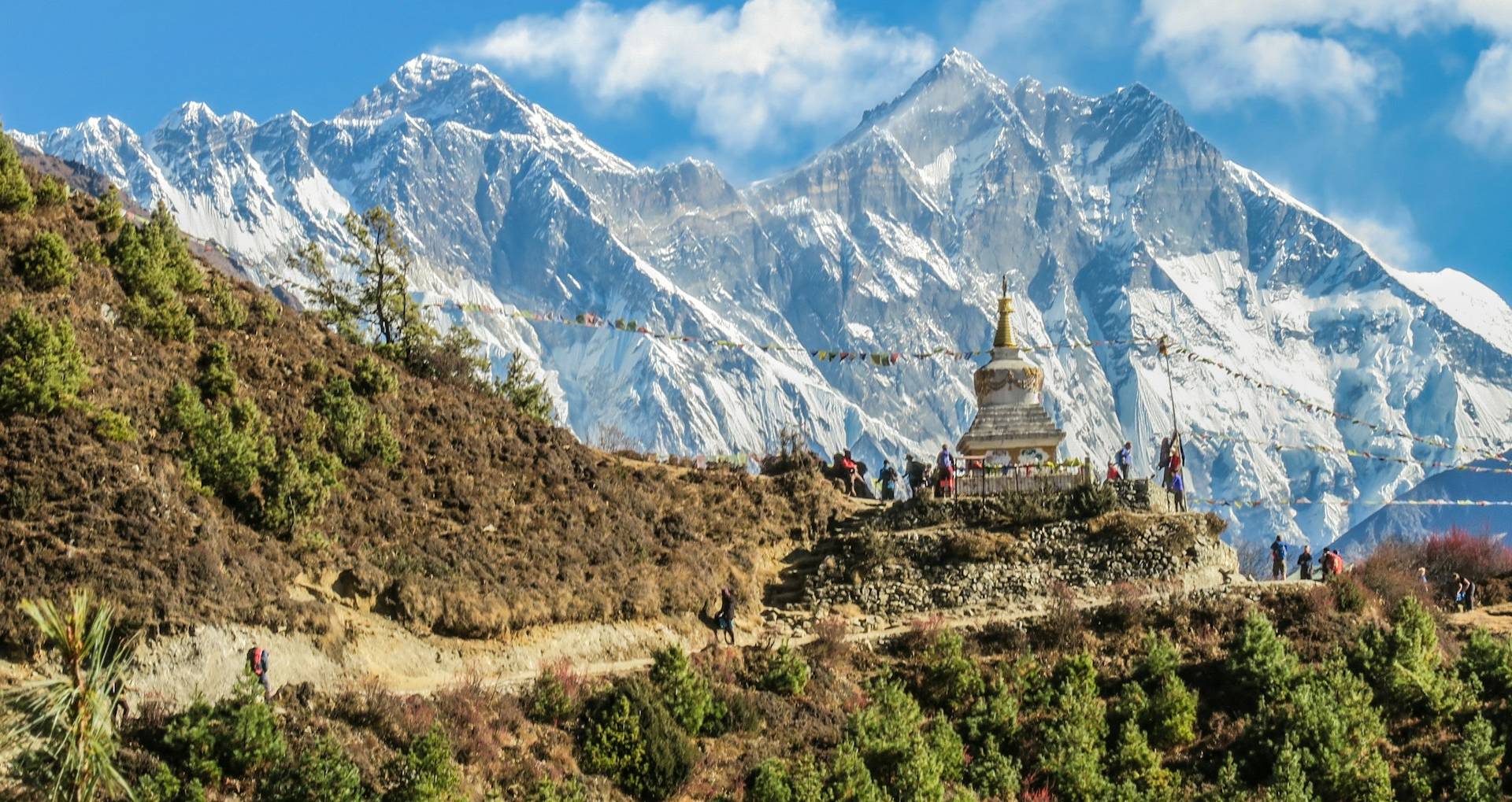The Nepalese constitution is based on the principle of building an inclusive democracy. Taking Nepal’s legislative representation as an example, Ganesh Prasad Pandeya (Nepal) and Tatsuo Oyama (Japan) explain why the country does not have equal representation in the legislature. Closely examining the data on Nepal’s different castes, ethnicities, religions, and gender, the researchers explain how certain institutional mechanisms and socioeconomic factors affect each group’s ability for fair political representation.
Nepal’s parliament: caste and ethnic composition
Both the Interim Constitution of Nepal (2007) and the Constitution of Nepal (2015) emphasise the principle of inclusive democracy and consensus-based decision-making and unsurprisingly in Nepal today the caste and ethnic composition of the representatives in the legislature of Nepal has become an important issue for discussions among politicians and sociologists. But how inclusive is Nepal political system? To try and answer this question we have divided Nepal’s political systems into four categories: ‘the first political system’ (1959-1962); ‘monarchy system’ (1962-1990); ‘majoritarian system’ (1990-2006); and ‘inclusive system’ (2006-2013). The results from a descriptive and inferential statistical analysis of all elected representatives from 1959 to 2013 sadly shows the existence of a prolonged unequal representation in the Nepalese legislature.
Caste and ethnic composition in Nepal
Nepal is a multiethnic and multicultural nation. The Central Bureau of Statistics records 125 caste/ethnic groups in Nepal. These groups are clustered into eight broad groups: (i) Khas-Arya, (ii) Hill Janajati, (iii) Madhesi, (iv) Hill Dalit, (v) Tarai Dalit, (vi) Tarai Janajati, (vii) Muslim, and (viii) Other social groups. These groups not only have socioeconomic differences and cultural diversity, but also disproportionate population share among groups (Table 1).
| Gender and Caste/Ethnicity | Ethnic/caste groups
(No) |
Population | Poverty rate | Per capita income (PPP, $) | Life Expectancy
|
Adult Literacy*
(%) |
HDI | |
| No | Percent
(%) |
|||||||
| Male | – | 12849041 | 48.50 | – | 1345 | 66.83 | 78.86 | – |
| Female | – | 13645463 | 51.50 | – | 769 | 71.44 | 56.39 | – |
| Khas/Arya | 4 | 8,278,401 | 31.25 | 18.3 | 1196 | 71.47 | 69.42 | 0.550 |
| Hill Janajati | 50 | 7,228,463 | 27.29 | 28.3 | 1051 | 70.51 | 62.99 | 0.509 |
| Tarai Janajati | 13 | 2,039,397 | 7.70 | 25.9 | 822 | 69.44 | 54.44 | 0.473 |
| Madhesi | 34 | 4,072,323 | 15.37 | 28.2 | 743 | 72.44 | 49.25 | 0.460 |
| Hill Dalit | 5 | 2,151,626 | 8.12 | 43.6 | 805 | 65.57 | 49.54 | 0.446 |
| Tarai Dalit | 15 | 1,192,517 | 4.50 | 38.2 | 616 | 70.45 | 23.05 | 0.400 |
| Muslim | 1 | 1,164,255 | 4.39 | 20.2 | 695 | 70.47 | 36.61 | 0.422 |
| Other social groups | 4 | 91,852 | 0.35 | 12.3 | 2316 | 72.87 | 55.15 | 0.586 |
| Unidentified | – | 275670 | 1.04 | – | – | – | – | – |
| Total | 126 | 26,494,504 | 100 | 25.2 | 1160 | 68.8 | 53.38 | 0.49 |
Table 1. Population and Socioeconomic Status by Gender and Caste/Ethnicity
Khas-Aryans, the upper-caste people, share the highest population of 31.25% in the national population. They have the highest human development index (HDI) and adult literacy in comparison to others. Hill Janajatis share 27.29% in the national population, and possess the second position in adult literacy and the third position in HDI values. Tarai Janajatis, sharing 7.70% of the national population, are relatively homogenous, but suffer from social discrimination. Madhesi shares 15.37% of the national population and mainly live in the low-land Tarai region. They have a relatively higher poverty rate and lower HDI values in comparison to Khas-Aryans. Dalits can be categorized into Hill Dalits and Tarai Dalits, comprising of 8.12% and 4.5% in the national population, respectively. Religiously, people are categorized mainly as Hindu (81.34%), Buddhist (9.04%), Muslim (4.39%), and Kirat (3.04%). Among them, Muslims are often isolated from mainstream politics. Finally, ‘Other social groups’ comprise 1.39% of the national population, comprising mainly Marwadi, Bangali, Sikh, and Jain.
Representation patterns in the legislature
Gender and representation
Despite the constitutional guarantees of non-discrimination and equality among men and women, Nepal has had a long-running gender bias in its legislature. The representation of women in the past, especially in the first three political systems, remained persistently low. However, Women’s representation in the inclusive system sharply increased to 31.06% from only 1.38% in the first political system, leading to rank Nepal 16th out of 188 countries for women representation in the legislature in 2009 (Figure 1). This increase was mainly due to the constitutional mandates that at least 33% seats should be given for women in the inclusive system. Nevertheless, reaching the parity zone in which women cross the 50 percent of seat seems difficult.
 Figure 1: Gender Ratio of all Representatives in the Legislature
Figure 1: Gender Ratio of all Representatives in the Legislature
Moreover, in Nepal the patterns of women representation are unequal across caste/ethnic groups. Women from Khas/Aryans have a considerable degree of overrepresentation while women from Hill Janajati, Madhesi, Tarai Janajati, and Tarai Dalit are more or less equally represented. However, women from Hill Dalit and Muslims are underrepresented.
Ethnicity and representation
Similar to the case of gender inequality, the Khas-Aryans group has always remained overrepresented while other social groups have remained underrepresented. Specifically, Hill Janajatis who are often just below the borderline, and Madhesis and Tarai Janajatis who are well below the borderline throughout the earlier three political systems and above the line in the inclusive system. Dalits and religious minorities, such as Hill Dalits, Tarai Dalits, and Muslims, are always far below the borderline (Figure 2, Table 2).
 Figure 2: Representation Patterns across Caste/Ethnicity in Different Political Systems (1959-2013)
Figure 2: Representation Patterns across Caste/Ethnicity in Different Political Systems (1959-2013)
| Caste/Ethnicity | First Political System | Monarchy System | Majoritarian System | Inclusive System | Total | National Population (%) | |||
| FPTP | PR | Nominated | All | ||||||
| Khas/Arya | 86
(59.31) |
157
(55.48) |
467
(59.72) |
459
(38.22) |
896
(56.18) |
202
(30.10) |
71
(48.97) |
1,169
(48.39) |
31.25 |
| Hill Janajati | 33 | 76 | 164 | 294 | 347 | 174 | 46 | 567 | 27.28 |
| (22.76) | (26.86) | (20.97) | (24.48) | (21.76) | (25.93) | (31.72) | (23.52) | ||
| Tarai Janajati | 7
(4.83) |
15
(5.30) |
47
(6.01) |
98
(8.16) |
101
(6.33) |
58
(8.64) |
8
(5.52) |
167
(6.93) |
7.70 |
| Madhesi | 15 | 29 | 79 | 205 | 202 | 116 | 10 | 328 | 15.37 |
| (10.34) | (10.25) | (10.10) | (17.07) | (12.66) | (17.29) | (6.90) | (13.60) | ||
| Hill Dalit | 0 | 2 | 8 | 63 | 13 | 57 | 3 | 73 | 8.12 |
| – | (0.71) | (1.02) | (5.25) | (0.82) | (8.49) | (2.07) | (3.03) | ||
| Tarai Dalit | 0 | 0 | 1 | 27 | 4 | 24 | 0 | 28 | 4.50 |
| – | – | (0.13) | (2.25) | (0.25) | (3.58) | – | (1.16) | ||
| Muslim | 3 | 4 | 14 | 36 | 29 | 23 | 5 | 57 | 4.39 |
| (2.07) | (1.41) | (1.79) | (3.05) | (1.82) | (3.43) | (3.45) | (2.36) | ||
| Others Social Groups | 1
(0.69) |
0
– |
2
(0.26) |
19
(1.58) |
3
(0.19) |
17
(2.53) |
2
(1.38) |
22
(0.91) |
0.35 |
| Total | 145 | 283 | 782 | 1,201 | 1,595 | 671 | 145 | 2,411 | |
| (100) | (100) | (100) | (100) | (100) | (100) | (100) | (100) | (98.96) | |
Table 2: Representation Patterns by Cast/Ethnicity and Political System (1959-2013)
Khas-Aryans: Khas-Aryans are only the people always over-represented in all the political systems. Their average rate of representation remained 48.39% as against 31.25% share in the national population. They secured on an average 59.31% seats in the first three political systems, but the share sharply declined to 38.22% in the inclusive system due to mainly quotas allotted for other social groups. Their high social-economic status could have offered them a better opportunity to win more seats by providing better power and resources required for party politics.
Hill Janajatis: Hill Janajatis have a relatively better share of representation in all the political systems. On average, they have secured 23.52% seats, just 3.77% points lower than their national population share (27.29%). Despite this achievement, there exists a sharp disparity in sharing seats among 50 subgroups of Hill Janajatis. Only four subgroups, namely Rai-Limbu, Thakali, Newar, and Gurung, have been holding dominant position throughout all the political systems (Figure 3).
Tarai Janajatis: Despite huge socioeconomic differences, Tarai Janajatis secured a relatively better position approaching toward the parity zone. With an ever-increasing trend, they have secured 6.93% seats in aggregate against their national population share of 7.70%. Similar to Hill Janajatis, Tarai Janajatis too face the problem of intra-group exclusion. Among 13 sub-groups, Tharu alone is predominant both in population share (85.74%) and the percentage of seats (83.83%) secured.
 Figure 3: Representation Patterns within Janajatis in different Political Systems (1959-2013)
Figure 3: Representation Patterns within Janajatis in different Political Systems (1959-2013)
Madhesis: Madhesis have on average a better position of representation (13.60%) to their national population (15.37%). Their representation remained almost constant (about 10%) during the first three political systems while it sharply increased to 17.07% in the inclusive system due mainly to quotas allotted for them. Similar to other groups, only four subgroups share an exceptionally high proportion of seats (60.06%) against their 35.77% population share. (Figure 4).
Dalits: Caste-based discrimination has always become a major cause of socio-economic inequality in Nepal. Hill Dalits share 3.03% seats in aggregate against their 8.12% share of the national population. Tarai Dalits also have a very low level of representation (1.16% in aggregate) compared to their national population (4.50%). Quite interestingly, Dalits have never got seats through nomination which was supposed to give high priority to them.
Muslims: This group has also been underrepresented throughout the study period. In aggregate, they secured only 2.36% seats, slightly more than a half of their national population (4.39%). Their representation patterns fluctuate over time with the lowest (1.41%) in the Monarchy system and the highest (3.00%) in the inclusive system.
 Figure 4: Representation Patterns with Madhesis in Different Political Systems (1959-2013)
Figure 4: Representation Patterns with Madhesis in Different Political Systems (1959-2013)
Other social groups: In aggregate, ‘other social groups’ secured 0.91% seat vis-à-vis their 0.35% share in the national population. Their success in achieving overrepresentation could be because of their high socioeconomic status and high access to mainstream politics.
To conclude, by and large, the extent and patterns of legislative representation across sexes and caste/ethnic groups over time show a considerable inequality to their population share. A few subgroups of peoples in Nepal have historically created a ‘creamy layer’ in the legislature throughout all the political systems. Hopes have been raised, however, as unequal representation patterns have improved over time as women and some excluded identities have made substantial gains, especially in the inclusive system.
We believe that the country can opt for three-prong approaches to lead towards equal representation. First, a system of ‘reservation within a reservation’ in each social group at national and sub-national levels is required to guarantee quotas only for the underrepresented groups, and thereby addressing the internal dynamics within groups. Second, institutional changes would better work if socioeconomic status of the people, especially the excluded and marginalized identities, are improved, their capacity is built-up. Third, above all, the task of reforming institutions and building capacity is basically a political process. Working on the political will and commitment is, therefore, essential to translate political institutions into social realities as well as building the capacity of the powerless.
This gives the views of the author and not the position of South Asia @ LSE blog, nor of the London School of Economics. Featured photo: Open Clipart Vectors, Pixabay. All tables and graphs in this piece have been created by the authors.
This article is a shortened and modified version of the article entitled “The question of equal representation of citizens in the legislature of Nepal: rhetoric and reality” published in the Asian Journal of Political Science.








The analysis is a bit superficial. The authors have failed to mention “cosmetic” nature of gender representation. As an example, a large portion of mayoral positions have gone to male politicians while female politicians have to satisfy with deputy mayor positions. Similarly, female quota has been consumed by wives, spinsters, girl-friends, bed-warmers, daughters and close relatives.